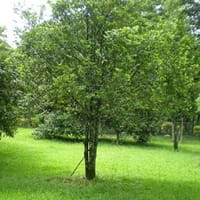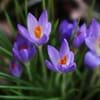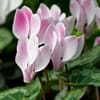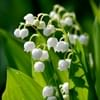Life Span
Perennial
Perennial
Type
Bulb, Flowering Plants
Tree
Origin
Aegean Islands, Central Asia, Middle East, North Africa, Southern Europe, Western China
Central Asia, Eastern Europe, Europe, Nepal, Southern Asia, Southern Europe
Types
Crocus abantensis, Crocus adanensis, Crocus biflorus, Crocus chrysanthus, Crocus korolkowii
Not Available
Habitat
Scrubs, Woods
Cold Regions, Hills, Hillside
USDA Hardiness Zone
3-8
9-11
Sunset Zone
1a, 1b, 2a, 2b, 3a, 3b, 4, 5, 6, 7, 8, 9, 10, 11, 12, 13, 14, 15, 16, 17, 18, 19, 20, 21, 22, 23, 24
1a, 1b, 2a, 2b, 3a, 3b, 4, 5, 6, 7, 8, 9, 14, 15, 16, 17, 18, 19, 20, 21
Habit
Clump-Forming
Oval or Rounded
Minimum Height
Not Available
Flower Color
Blue, Orange, Pink, Purple, White, Yellow
Not Available
Flower Color Modifier
Not Available
Bicolor
Fruit Color
Not Available
Green, Brown
Leaf Color in Spring
Green
Green, Copper
Leaf Color in Summer
Not Available
Dark Green
Leaf Color in Fall
Green
Green
Leaf Color in Winter
Green
Green
Leaf Shape
Grass like
Oval
Plant Season
Spring, Winter
All year
Sunlight
Full Sun, Part sun
Full Sun
Growth Rate
Medium
Medium
Type of Soil
Loamy
Clay, Loam, Sand
The pH of Soil
Neutral, Slightly Acidic
Acidic, Neutral
Soil Drainage
Well drained
Well drained
Bloom Time
Spring, Winter
Late Spring, Early Summer
Tolerances
Drought
Not Available
Where to Plant?
Container, Ground, Pot
Ground
How to Plant?
From bulbs, Grafting, Seedlings
Budding, Seedlings
Plant Maintenance
Medium
Medium
Watering Requirements
Form a Soil ring to water efficiently, Water Deeply, Water twice a day in the initial period, Water when soil is dry
Requires watering in the growing season, Water Deeply, Water when top layer of soil becomes dry
In Summer
Lots of watering
Lots of watering
In Spring
Moderate
Moderate
In Winter
Average Water
Average Water
Soil pH
Neutral, Slightly Acidic
Acidic, Neutral
Soil Type
Loamy
Clay, Loam, Sand
Soil Drainage Capacity
Well drained
Well drained
Sun Exposure
Full Sun, Part sun
Partial Sun, Partial shade
Pruning
No pruning needed in the early stages, Prune to stimulate growth, Remove dead or diseased plant parts, Requires little pruning
In Early Autumn, Prune to stimulate growth, Remove dead leaves
Fertilizers
All-Purpose Liquid Fertilizer
fertilize in spring, Nitrogen
Pests and Diseases
Aphids, Botrytis Blight, Mushroom root rot, Narcissus Basal Rot, Narcissus Bulb Fly, Slugs, Snails, Tulip Fire, Tulip Viruses
Anthracnose, Armillaria mellea, Blight, Caterpillars, Crown gall, Crown rot, fungus, Powdery mildew, Red blotch
Plant Tolerance
Drought
Drought, Frost
Flower Petal Number
Single
Single
Fragrant Bark/Stem
No
Yes
Foliage Texture
Fine
Medium
Foliage Sheen
Glossy
Glossy
Attracts
Not Available
Aphids, Bees, Beetles, Caterpillar, Small mammals
Allergy
Not Available
Abdominal distension, flushing of face, hallucinations, Headache, Pollen
Aesthetic Uses
Not Available
Not Available
Beauty Benefits
Not Available
Good for skin and hair
Environmental Uses
Air purification
Absorbs greenhouse gases, Absorbs huge amounts of CO2, Air purification, Amazing growth rate, Erosion control, Food for birds, Food for insects, Forms dense stands, Nesting sites for birds, Prevent Soil Erosion, Shadow Tree, Shelter for wildlife, Windbreak
Medicinal Uses
Arthritis, Gout
Anemia, anti-cancer, Antispasmodic, Asthma, Diarrhea, Healing, Stomach spasms, Thoat infection
Part of Plant Used
Whole plant
Fruits, Seeds
Other Uses
Not Available
Making deodorants, Oil is used for aromatherapy, Oil is used in mosquito repellents, Used as a laxative, Used for its medicinal properties, Used for making soaps, Used in biomass
Used As Indoor Plant
No
No
Used As Outdoor Plant
Yes
Yes
Garden Design
Not Available
Container, Groundcover
Botanical Name
Crocus Longiflorus
Myristica fragrans
Common Name
Crocus
Nutmeg
In German
Krokus
Muskatnuss
In French
Crocus
noix de muscade
In Spanish
Azafrán
nuez moscada
In Greek
κρόκος
μοσχοκάρυδο
In Portuguese
Açafrão
noz-moscada
In Polish
Krokus
gałka muszkatołowa
Phylum
Magnoliophyta
Magnoliophyta
Class
Liliopsida
Magnoliopsida
Order
Asparagales
Magnoliales
Clade
Angiosperms, Monocots
Angiosperms, Monocots
Tribe
Not Available
Myrteae
Subfamily
Crocoideae
Myrtoideae
Importance of Crocus and Nutmeg
Want to have the most appropriate plant for your garden? You might want to know the importance of Crocus and Nutmeg. Basically, these two plants vary in many aspects. Compare Crocus and Nutmeg as they differ in many characteristics such as their life, care, benefits, facts, etc. Every gardener must at least have the slightest clue about the plants he wants to plant in his garden. Compare their benefits, which differ in many ways like facts and uses. The medicinal use of Crocus is Arthritis and Gout whereas of Nutmeg is Anemia, anti-cancer, Antispasmodic, Asthma, Diarrhea, Healing, Stomach spasms and Thoat infection. Crocus has beauty benefits as follows: Not Available while Nutmeg has beauty benefits as follows: Not Available.
Compare Facts of Crocus vs Nutmeg
How to choose the best garden plant for your garden depending upon its facts? Here garden plant comparison will help you to solve this query. Compare the facts of Crocus vs Nutmeg and know which one to choose. As garden plants have benefits and other uses, allergy is also a major drawback of plants for some people. Allergic reactions of Crocus are Not Available whereas of Nutmeg have Abdominal distension, flushing of face, hallucinations, Headache and Pollen respectively. Having a fruit bearing plant in your garden can be a plus point of your garden. Crocus has no showy fruits and Nutmeg has no showy fruits. Also Crocus is flowering and Nutmeg is not flowering . You can compare Crocus and Nutmeg facts and facts of other plants too.





